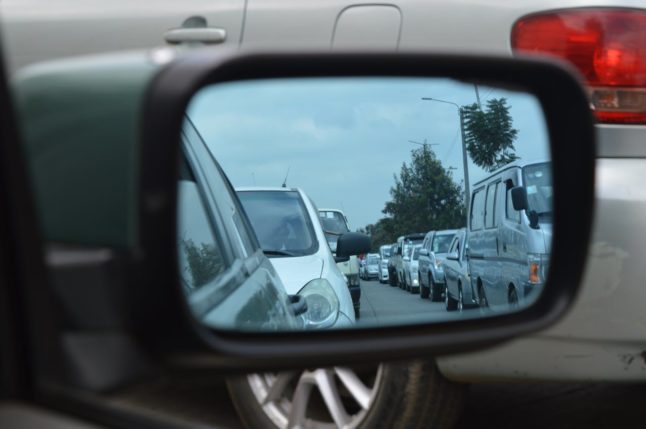Italy is one of the most favourite summer destinations for many Swiss families: not only is it geographically close enough to get there by car, but it also has abundance of beaches and good weather is almost guaranteed.
But driving to Italy this summer, especially in the next few weeks, will be no simple matter.
Recent massive thunderstorms unleashed a landslide of mud and rubble, which destroyed a part of the north-south axis of the A13 motorway.
The collapsed section, between Thusis (GR) and Bellinzona (TI), is an important throughway for both passenger and commercial traffic, as it connects Switzerland with Italy.
The San Bernardino Pass, which straddles the A13, is consequently closed to traffic, as are the impacted parts of the motorway.
They will remain closed ‘until further notice,’ which is a general and non-specific term — primarily because nobody knows for sure.
According to the Graubünden cantonal police, this section will remain out of service “for months,” while the Federal Roads Office (FEDRO) said it expects “to be able to reopen the A13 in three to four weeks.”
But even this slightly more optimistic forecast is not definite.
Roads will reopen within this timeframe “only under the assumption that there will be no ‘nasty surprises,’ according to FEDRO. “The clean-up work and reconstruction depends, among other things, on the weather.”
Either way, if you are heading south in the immediate future, expect, as Swiss media reported, “impending traffic chaos.”
To make matters worse, the cantonal road, which is normally used as an alternative, was also damaged by the storm, and is closed to transit and through traffic in both directions.
What alternative south-bound routes are there?
FEDRO recommends the Gotthard route — either via the tunnel or the Pass.
There are other options as well, though they will take longer:
In Switzerland:
- Over the Oberalp and Lukmanier passes
- Over the Julier and Maloja passes
- Over the Albula and Bernina passes via Poschiavo
- Over the Grimsel and Nufenen passes
- Through the Lötschberg car transport and the Simplon pass
- From the Brünig pass road via Grimsel and Simplon
- Via Martigny over the Great St. Bernard
Alternative routes abroad, for which fees may apply:
- Via South Tyrol
- Via Geneva through the Mont Blanc tunnel
- Via Geneva, Annecy and the Fréjus tunnel
Will you be able to avoid traffic jams on these alternate routes?
It is highly doubtful.
During the holiday season, there is almost always congestion and bottlenecks in front of the Gotthard Tunnel, the Great St. Bernard, and the Lötschberg.
Traffic could be lighter if you avoid peak travel hours and weekends, but don’t expect miracles.
You can find real-time information about traffic jams and road conditions here:
Should you travel by train instead?
It is always a good idea if you want to reduce your carbon footprint, and trains are typically a more relaxing and reliable way to travel.
Except this summer.
From June 9th, and for at least three months, the train service between Italian cities of Domodossola and Milan will be interrupted due to railway works, also disrupting travel between western Switzerland and Italy.
A bus service set up by Swiss national railway company, SBB, will run between the two cities, adding at least an hour to the trip in the best traffic conditions.
But train traffic to and from other countries — including France, Germany, and Austria — will be chaotic as well.
You can find more information about these disruptions here:
READ ALSO: Why you should not rely on trains to and from Switzerland this summer



 Please whitelist us to continue reading.
Please whitelist us to continue reading.
Member comments